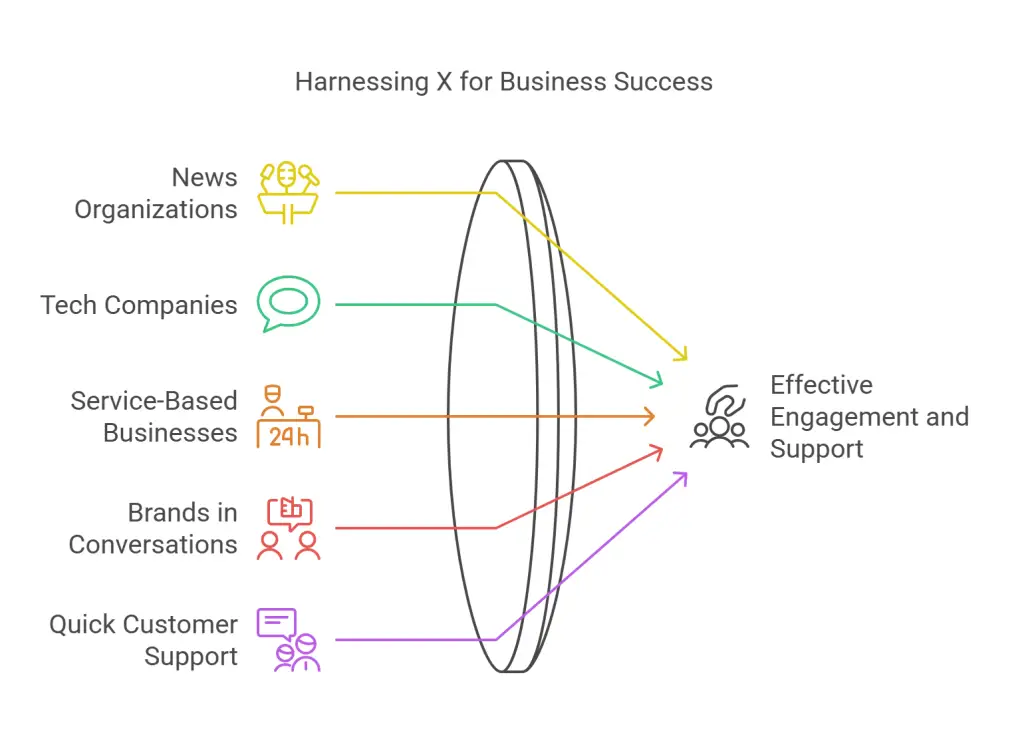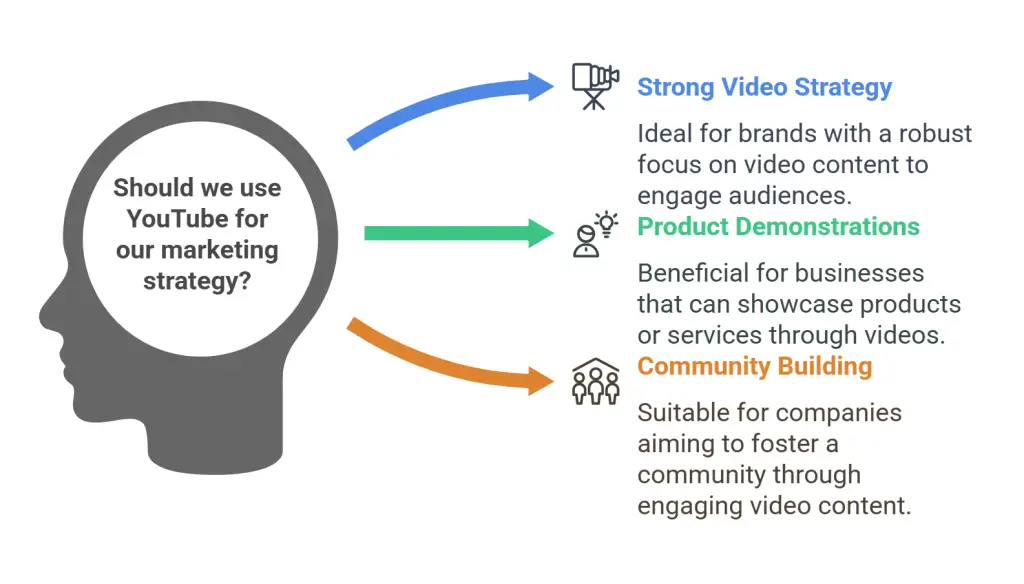Social media has become an indispensable tool for businesses of all sizes. For small businesses, Building a social media presence can be the difference between thriving and merely surviving. Social media provides an unparalleled opportunity to reach a vast audience, engage with customers on a personal level, and build a loyal community around your brand. However, the sheer volume of platforms and the ever-evolving landscape can be daunting. Many small business owners find themselves asking: Where do I start? Which platforms should I focus on? How do I keep my audience engaged?
This comprehensive guide aims to answer these questions and more. We’ll explore the concept of building a social media presence, why it’s critical for small businesses, which platforms are most relevant, the best times to post for maximum engagement and practical strategies for building and maintaining a strong social media presence. Whether you’re new to social media or looking to refine your existing strategy, this guide will equip you with the insights and tools needed to make a significant impact online.
What is a Social Media Presence?
A social media presence refers to the level of visibility, influence, and engagement a brand or individual has across various social media platforms. It’s not just about having accounts on platforms like Facebook, Instagram, or X; it’s about how active, interactive, and impactful those accounts are. In simple terms, it’s the digital footprint your business leaves on the social landscape.
A robust social media presence is built through consistent and meaningful interactions with your audience. This includes posting regular content, responding to comments and messages, sharing relevant information, and participating in conversations that matter to your audience. The goal is to create a sense of community and foster relationships that go beyond mere transactions.
For small businesses, a strong social media presence can lead to increased brand recognition, customer loyalty, and even direct sales. Unlike traditional advertising, social media allows for two-way communication. It’s a space where customers can interact with your brand, ask questions, and share their experiences. This level of engagement not only helps build trust but also provides valuable insights into what your customers want and need.

Why is Building a Social Media Presence Crucial for Small Businesses?
Social media has revolutionized the way businesses communicate with their audiences. For small businesses, in particular, it offers a cost-effective way to reach a large audience, compete with bigger brands, and establish a unique voice in the market. Here are several reasons why social media is crucial for small businesses:
1. Increased Visibility
Social media platforms are where people spend a significant portion of their time online. By establishing a presence on these platforms, your business becomes more visible to potential customers. Every post, comment, or like increases your brand’s visibility, making it easier for customers to find and recognize your business.
2. Cost-Effective Marketing
Traditional marketing methods like TV, radio, or print ads can be expensive, especially for small businesses. Social media, on the other hand, offers a cost-effective alternative. Creating a business profile on platforms like Facebook, Instagram, or X is free, and paid advertising on these platforms is often more affordable and targeted compared to traditional media.
3. Targeted Advertising
One of the most significant advantages of social media advertising is the ability to target specific demographics. You can tailor your ads to reach people based on their age, gender, location, interests, and even behaviors. This ensures that your marketing efforts are focused on the people most likely to be interested in your products or services, increasing the chances of conversion.
4. Customer Engagement and Interaction
Social media is a two-way street. It’s not just about broadcasting your message; it’s about engaging with your audience. Through likes, comments, shares, and direct messages, you can interact with your customers in real-time. This engagement builds relationships, fosters loyalty, and gives you insights into what your customers are thinking.
5. Building Brand Loyalty
Consistency in your social media presence helps build brand loyalty. When customers see regular, valuable content from your brand, they’re more likely to trust and support your business. Social media also provides an opportunity to showcase your brand’s personality, values, and culture, which can resonate with your audience on a deeper level.
6. Driving Website Traffic and Sales
Social media platforms are powerful tools for driving traffic to your website. By sharing blog posts, product updates, and special offers, you can direct your audience to your website, where they can learn more about your business or make a purchase. Integrating social media with e-commerce features also allows customers to buy directly from your social profiles, streamlining the purchasing process.
7. Staying Competitive
In today’s market, having a social media presence is not just an advantage—it’s a necessity. Many of your competitors are already using social media to reach their audience. Without a strong social media presence, you risk falling behind and losing market share to businesses that are more visible and engaged with their customers.

Where Should Small Businesses Focus Their Social Media Efforts?
With so many social media platforms available, it can be challenging to decide where to focus your efforts. The key is to understand which platforms align with your business goals and where your target audience spends their time. Here’s a breakdown of the most popular platforms and their relevance to different business types:
1. Facebook
Facebook remains one of the most widely used social media platforms, with over 2.8 billion monthly active users. It’s a versatile platform suitable for almost any type of business. Small businesses can use Facebook to build a community, share content, run targeted ads, and engage with customers through comments and messages.
Who Should Use It?
- Local businesses looking to reach a broad audience.
- Businesses offering products or services that appeal to a wide demographic.
- Brands wanting to run targeted ads based on detailed demographic information.

2. Instagram
Instagram is a visually-driven platform that’s particularly popular among younger audiences. It’s an excellent choice for businesses that can showcase their products or services through high-quality images and videos. Instagram’s features, such as Stories, Reels, and Shopping, provide creative ways to engage with your audience and drive sales.
Who Should Use It?
- Retailers, restaurants, and lifestyle brands.
- Businesses targeting millennials and Gen Z.
- Brands with visually appealing products or services.

3. LinkedIn
LinkedIn is the go-to platform for B2B businesses and professionals. It’s an ideal place for networking, sharing industry insights, and establishing your business as a thought leader in your field. LinkedIn is also effective for recruiting talent and connecting with other businesses.
Who Should Use It?
- B2B companies.
- Professional services (consulting, finance, law).
- Businesses looking to establish authority in their industry.

4. X
X is a platform known for real-time updates and conversations. It’s a great platform for businesses that want to engage in discussions, share news, and interact with customers in a fast-paced environment. X’s brevity and immediacy make it a valuable tool for customer service and public relations.
Who Should Use It?
- News organizations, tech companies, and service-based businesses.
- Brands looking to engage in industry conversations or live events.
- Businesses wanting to provide quick customer support.

5. Pinterest
Pinterest is a platform focused on discovery and inspiration. It’s particularly popular among users looking for ideas related to home decor, fashion, beauty, and DIY projects. Pinterest’s visual format makes it a powerful tool for driving traffic to your website, especially for businesses with a strong visual component.
Who Should Use It?
- E-commerce stores, especially in fashion, beauty, and home decor.
- Businesses targeting women and DIY enthusiasts.
- Brands with content that lends itself to tutorials or how-to guides.

6. YouTube
YouTube is the world’s largest video-sharing platform, making it an essential tool for businesses with video content. Whether you’re creating tutorials, product demos, or vlogs, YouTube allows you to reach a global audience and drive engagement through visual storytelling.
Who Should Use It?
- Brands with a strong video marketing strategy.
- Businesses offering products or services that benefit from demonstrations or tutorials.
- Companies looking to build a community through video content.

7. TikTok
TikTok is a relatively new platform but has quickly gained popularity, especially among younger audiences. It’s a platform built around short-form videos and creative content, making it a great option for brands that want to experiment with new trends and reach a highly engaged audience.
Who Should Use It?
- Brands targeting Gen Z and millennials.
- Businesses in fashion, entertainment, and lifestyle sectors.
- Companies looking to build brand awareness through viral content.

When to Post on Social Media for Maximum Engagement?
Posting at the right time can significantly impact the success of your social media efforts. While there’s no one-size-fits-all answer, certain trends and insights can guide you in scheduling your posts for maximum engagement. The key is to understand your audience’s behavior and tailor your posting schedule accordingly.
1. General Best Times to Post
Research indicates that the best times to post on social media generally fall within the following windows:
- Facebook: 9 a.m. to 1 p.m. on weekdays.
- Instagram: 10 a.m. to 3 p.m. on weekdays.
- LinkedIn: 8 a.m. to 10 a.m. and 12 p.m. on weekdays.
- X: 9 a.m. to 11 a.m. on weekdays.
- Pinterest: 8 p.m. to 11 p.m., with a peak at 9 p.m.
- YouTube: 12 p.m. to 4 p.m. on weekdays.
- TikTok: 6 a.m. to 10 a.m. and 7 p.m. to 11 p.m.
These time slots reflect when users are most active on these platforms. However, it’s essential to test and analyze your own posts to determine the optimal times for your specific audience.
2. Consider Your Audience’s Time Zone
If your business serves a local community, it’s straightforward—post during peak hours in your local time zone. However, if you have a broader, even global, audience, consider scheduling posts that align with the peak times in different time zones. For example, if you have a large following in both the U.S. and Europe, you might want to post in the morning to reach European audiences and in the afternoon to catch U.S. users.
3. Frequency of Posting
Posting frequency can also affect engagement. Here’s a general guideline:
- Facebook: 1-2 posts per day.
- Instagram: 1-3 posts per day, including Stories.
- LinkedIn: 1 post per day.
- X: 3-7 tweets per day.
- Pinterest: 10-12 pins per day.
- YouTube: 1-2 videos per week.
- TikTok: 1-3 posts per day.
Again, the right frequency depends on your audience and content quality. It’s better to focus on quality over quantity—posting valuable, engaging content less frequently is more effective than flooding your feed with posts that don’t resonate with your audience.
4. Use Analytics to Fine-Tune Timing
Most social media platforms offer analytics tools that provide insights into when your followers are online and engaging with your content. Regularly review these analytics to fine-tune your posting schedule. Over time, you’ll be able to identify the patterns that work best for your business.

Steps to Build and Maintain a Strong Social Media Presence
Now that you understand the importance of a social media presence, the platforms to focus on, and when to post, it’s time to dive into the practical steps to build and maintain a strong social media presence.
1. Define Your Goals
Before you start posting, it’s crucial to define what you want to achieve with your social media efforts. Common goals for small businesses include increasing brand awareness, driving website traffic, generating leads, and boosting sales. Your goals will shape your content strategy and help you measure success.
Example Goals:
- Increase Facebook followers by 20% in the next three months.
- Generate 50 leads per month through LinkedIn.
- Drive 1,000 monthly visits to the website from Instagram.
2. Understand Your Audience
Knowing your audience is the foundation of any successful social media strategy. Create detailed buyer personas that include demographics, interests, behaviors, and pain points. Understanding who your audience is and what they care about will help you create content that resonates with them.
Questions to Consider:
- What age group does your audience fall into?
- What are their interests and hobbies?
- What challenges do they face that your product or service can solve?
- Where do they spend most of their time online?
3. Create a Content Strategy
A well-thought-out content strategy is essential for maintaining a consistent and engaging social media presence. Your content should align with your business goals and cater to your audience’s interests.
Types of Content to Consider:
- Educational Content: Blog posts, how-to guides, tutorials.
- Promotional Content: Product launches, discounts, special offers.
- Engaging Content: Polls, questions, user-generated content.
- Visual Content: Infographics, images, videos.
- Interactive Content: Live videos, Q&A sessions, contests.
Plan your content in advance using a content calendar. This will help you maintain consistency and ensure a good mix of content types.
4. Engage with Your Audience
Social media is not just a broadcasting tool—it’s a platform for conversation. Respond to comments, answer questions, and engage with your audience regularly. This interaction not only helps build relationships but also shows that you value your customers.
Ways to Engage:
- Reply to comments on your posts.
- Like and share user-generated content.
- Participate in relevant industry conversations.
- Use polls and questions to encourage interaction.
5. Leverage Hashtags
Hashtags are a powerful tool for increasing the visibility of your posts. Use relevant and trending hashtags to reach a broader audience. However, avoid overloading your posts with too many hashtags—focus on quality and relevance.
Hashtag Tips:
- Use a mix of popular and niche hashtags.
- Create a branded hashtag for your business.
- Monitor trending hashtags in your industry.
6. Utilize Social Media Tools
There are numerous tools available that can help you manage your social media presence more effectively. Tools like Hootsuite, Buffer, and Sprout Social allow you to schedule posts, track engagement, and analyze performance. These tools can save you time and provide valuable insights into your social media strategy.
Tool Functions:
- Scheduling: Plan and automate posts in advance.
- Analytics: Track metrics like engagement, reach, and conversions.
- Monitoring: Keep an eye on mentions and keywords relevant to your brand.
7. Collaborate with Influencers
Influencer marketing can be a powerful way to expand your reach on social media. Partnering with influencers who align with your brand can help you reach new audiences and build credibility.
Steps to Collaborate:
- Identify influencers in your niche.
- Reach out with a proposal for collaboration.
- Ensure the partnership feels authentic to both the influencer and your brand.
8. Analyze and Adjust
Social media is constantly evolving, and what works today might not work tomorrow. Regularly analyze your performance metrics to see what’s working and what’s not. Use this data to adjust your strategy and stay ahead of trends.
Metrics to Monitor:
- Engagement Rate: Likes, comments, shares.
- Reach and Impressions: How many people see your content.
- Click-Through Rate (CTR): How many people click on your links.
- Conversion Rate: How many actions (sales, sign-ups) result from your social media efforts.
9. Stay Consistent
Consistency is key to building and maintaining a strong social media presence. This doesn’t mean posting all the time, but rather maintaining a regular schedule and consistently delivering value to your audience. Over time, this consistency will help build trust and loyalty among your followers.
10. Stay Up-to-Date with Trends
Social media trends can change rapidly. Stay informed about the latest trends and updates on each platform. Whether it’s a new feature like Instagram Reels or a shift in content formats, adapting to these trends can keep your content fresh and relevant.

Conclusion
Building a strong social media presence takes time, effort, and strategic planning, but the rewards are well worth it. By understanding the importance of social media for your small business, focusing on the right platforms, posting at optimal times, and following a structured approach to content creation and engagement, you can establish a presence that not only increases visibility but also drives meaningful results for your business.
Social media offers an unprecedented opportunity for small businesses to connect with their audience, build a loyal customer base, and compete with larger brands. With the right strategy, you can leverage social media to grow your business and achieve your goals. Start by defining your goals, understanding your audience, and consistently delivering value through engaging content. As you refine your approach and stay adaptable to trends, your social media presence will become a powerful asset in your business toolkit.
Further reading
Sprout Social. “Building a Social Media Presence: A Step-by-Step Guide.” Last accessed February 3, 2025. https://sproutsocial.com/insights/building-social-media-presence/.
Birmingham City University. “Eleven Tips to Build a Social Media Presence.” Last accessed February 3, 2025. https://www.bcu.ac.uk/blog/marketing/eleven-tips-to-build-a-social-media-presence.
Digital Marketing Institute. “10 Steps to Building Your Personal Brand on Social Media.” Last accessed February 3, 2025. https://digitalmarketinginstitute.com/blog/10-steps-to-building-your-personal-brand-on-social-media.
YouTube. “How to Build a Strong Social Media Presence.” Last accessed February 3, 2025. https://www.youtube.com/watch?v=Z1edvos_nnc.
Forbes. “Six Tips for Building a Social Media Presence from the Ground Up.” Last accessed February 3, 2025. https://www.forbes.com/councils/forbesagencycouncil/2019/06/20/six-tips-for-building-a-social-media-presence-from-the-ground-up/.
Hootsuite. “Create Engaging and Effective Social Media Content.” Last accessed February 3, 2025. https://help.hootsuite.com/hc/en-us/articles/4403597090459-Create-engaging-and-effective-social-media-content.
YouTube. “Building a Strong Social Media Presence for Your Brand.” Last accessed February 3, 2025. https://www.youtube.com/watch?v=SDu_ApDpkC8.
Wix. “How to Build a Strong Social Media Presence.” Last accessed February 3, 2025. https://www.wix.com/blog/social-media-presence.
Business.gov.au. “Social Media for Business.” Last accessed February 3, 2025. https://business.gov.au/online-and-digital/social-media-for-business.







